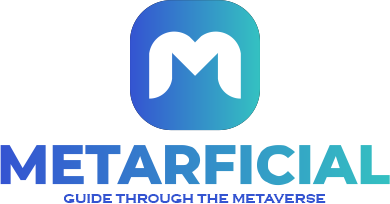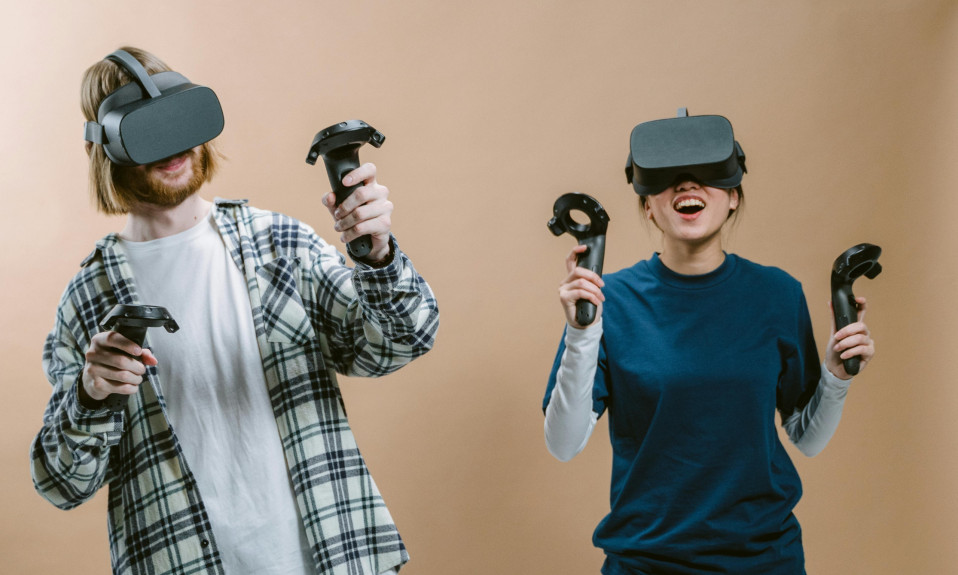You’ve probably heard that the metaverse is coming, and it would revolutionize how we work, play, socialize and do virtually everything.
But what is the metaverse? It is an immersive and persistent shared experience backed by the convergence of virtual reality, augmented reality, and the internet.
On the other hand, blockchain is an immutable record of transactions stored in separate blocks linked to each other in a chain using cryptographic technology. (1)
The use cases of blockchain technology have grown exponentially in the past few years, with crypto-currencies and NFTs being at the forefront.
What started as a technology to support digital currency systems has grown way past a payment solution.
We’ve seen large corporations develop private blockchain solutions for companies who prefer to keep certain information classified.
Top tech firms like IBM and Intel deploy these blockchain technology solutions to businesses looking to improve supply chain problems.
The question remains. How would blockchain technology, the concept of decentralization, and the metaverse work in synergy?
Without further ado, let’s get this question answered.
Quick Navigation
Crypto Currencies Powering The Metaverse Economy
Founded in 1989 was the first digital currency ever made called Digicash; developed to enable untraceable and anonymous transactions.
Digicash and other digital currency systems like E-gold created a framework for blockchain-based cryptocurrencies to emerge. (2)
In January 2009, the original bitcoin software was released to the public, and today, we have well over 18,000 crypto-currencies and tokens.
Bitcoin has grown to be the most popular crypto-currency, attributed to its use in making transactions faster, safer, and more efficient.
Blockchain-based crypto-currencies eliminate the need for escrows or intermediaries like traditional banks and financial institutions when carrying out transactions.
They support safer and more efficient payment solutions that cut across the borders of one’s country.
Crypto-currencies would power the economy of the metaverse.
It is the most obvious use case of blockchain technology in the metaverse.
Decentraland and Axie Infinity are examples of virtual reality platforms that use blockchain technology to power their virtual world economies.
These platforms build crypto-currencies and token-based systems that piggyback on the blockchain to make transactions better within their ecosystem.
If shopping and working would be possible in the metaverse; then it makes sense to rely on cryptocurrencies as the blockchain would enable seamless transactions.
For gamers, the introduction of play-to-earn games with token-based systems seems to be the holy grail waiting to be fully explored in the metaverse.
This would give the opportunity for gamers to make a living by doing the things they love doing (literally).
In-game rewards and assets accumulated over time from gameplay could be exchanged or sold on blockchain-enabled marketplaces for actual cash.
However, some people consider the cryptocurrency ecosystem to be a bubble due to a lack of scalability and price volatility which shows a lack of inherent value.
Does this mean crypto-currencies may never reach wide-scale adoption? We can’t predict, but here’s what we do know.
As more attention shifts towards virtual reality, we may see popular game engines and developers create experiences for gamers within the metaverse.
Bonus: Get exclusive roundups we share with only our subscribers as we help you navigate through the Metaverse and virtual reality space.
Smart Contracts Redefining Automation and Transparency
In 1998, Nick Szabo, the inventor of a virtual currency called “Bit Gold” proposed the idea of having digital contracts stored and operational within the blockchain.
He referred to these digital contracts as smart contracts, enabling codes and programs built on the blockchain to get executed automatically as long as predefined conditions were satisfied.
In other words, smart contracts are software applications built into the blockchain that enforces certain agreements on auto-pilot.
Following this framework, Ethereum launched a platform in 2015 that enabled smart contract applications to be built on the ethereum network.
Like the blockchain, smart contracts eliminate the need for third-parties involvement before enforcing contracts or agreements between select parties.
It means once a contract has been programmed and uploaded on the blockchain, it would remain immune to external interference and execute automatically.
Prominent banks like Goldman Sachs see the growth needed for the adoption of smart contracts and cryptocurrencies among financial institutions.
Smart contracts are likely to be built to support and automate financial services like saving, staking, lending, or borrowing of crypto-currencies in the metaverse.
It would help reinforce trust in financial institutions to deliver on the promise when smart contracts are deployed.
What if wills get written using smart contracts, and crypto-currencies get distributed to the respective wallet addresses after the death of the owner?
Or do online gambling and lottery platforms get built with predefined protocols using smart contracts?
We’ve only scratched the surface, and there are endless possibilities of how the blockchain and smart contract would improve virtual reality.
In the metaverse, we predict increased adoption of smart contracts for improving transparency and ease of execution when agreements get made with multiple parties.
NFTs Disrupting Digital Assets Ownership in the Metaverse
The metaverse would have an enormous supply of digital assets from digital arts to avatars, gaming assets, virtual real estate, and lots more.
Digital assets get stored as NFTs (Non-Fungible Tokens) within the blockchain, which makes it easy to identify who owns these unique assets.
Once stored on the blockchain, they are non-fungible and non-interchangeable, unlike crypto-currencies which can be swapped or exchanged.
NFT mint farms and online platforms like Opensea and Rarible have experienced a tremendous increase in their user base in the past few years.
Although most NFTs get minted on the ethereum blockchain, some platforms have adopted other scaling solutions like polygon to help reduce minting fees or gas fees.
Popular virtual reality platforms have built their ecosystem around NFTs for digital assets and crypto-currencies for tokenomics within their virtual worlds.
In the decentraland ecosystem, virtual real estate gets sold as NFTs on blockchain-based marketplaces. On axie infinity, players are allowed to create digital creatures as NFTs which can be traded.
The use of NFTs would go beyond digital assets within the metaverse to real-world applications in years to come.
Real estate documents showing ownership of properties in the real world could be NFTs and together with smart contracts would make sales and transfer of ownership more efficient.
Bonus: Get exclusive roundups we share with only our subscribers as we help you navigate through the Metaverse and virtual reality space.
Decentralization Giving Users Governing Power In The Metaverse
Speculations have been going around, following Mark Zuckerberg’s recent announcement of Facebook’s re-brand to Meta; showing their long-term commitment to building the metaverse.
Questions have been popping up on mainstream media, regarding who or what corporation would rule the metaverse.
The concept of decentralization in the blockchain would give governing power and authority to users within the metaverse ecosystem.
Unlike privately owned platforms and applications, there wouldn’t be a team of developers somewhere to make decisions or a board of directors to shove their opinions down the throat of users.
Blockchain-based decentralization protocols remove central authority and governing bodies from controlling the affairs of the metaverse.
Users would be able to make decisions to support various policies and regulations, allocating community funds when necessary to sponsor various projects within the metaverse.
Several virtual reality platforms have adopted these blockchain-based decentralization protocols, the most popular being DAO.
DAO which stands for the decentralized autonomous organization is a governing system within the blockchain that enables users to vote to make changes within the virtual world’s ecosystem.
However, there may be some cons to using DAOs like inactive voters and imbalance of voting powers.
For instance, voting power in decentraland’s ecosystem has a direct correlation with the amount of mana token voters hold in their wallets.
It implies that holders of the most mana tokens would have an equal advantage when casting their votes towards changes in decentraland.
The first case use of DAO back in 2016 failed due to security vulnerabilities and attacks from hackers. However, the underlying framework has been adopted and is being used today.
With the aid of blockchain technology, we are excited to see a fully-realized metaverse experience where decisions get made and infrastructures built for users and by the users.
Conclusion:
From what we see, the blockchain has a crucial role in shaping and molding the metaverse experience.
Cryptocurrencies would support payment systems, NFTs would revolutionize ownership of both real-life and digital assets.
Smart contracts may be the next big thing for financing, gambling, automation, and a whole lots more.
The most concerning part for us is knowing that building a fully immersed metaverse would consider the power of the people.
Decentralized Autonomous Organisations (DAOs) would make for good governance within the metaverse, putting governing power in the hands of users who would dominate virtual reality.
It is also important to note that these technology solutions aren’t free from loopholes and vulnerabilities that can be exploited.
We’ve heard of notorious hacks made on the crypto space with anonymous persons doing away with millions of dollars worth of crypto-currencies.
But like any innovation in the tech space, a lot of what we know remains speculations.
No one can predict how or when a fully immersive metaverse would surface. More or less, incorporating blockchain technology and decentralization altogether.
Bonus: Get exclusive roundups we share with only our subscribers as we help you navigate through the Metaverse and virtual reality space.





